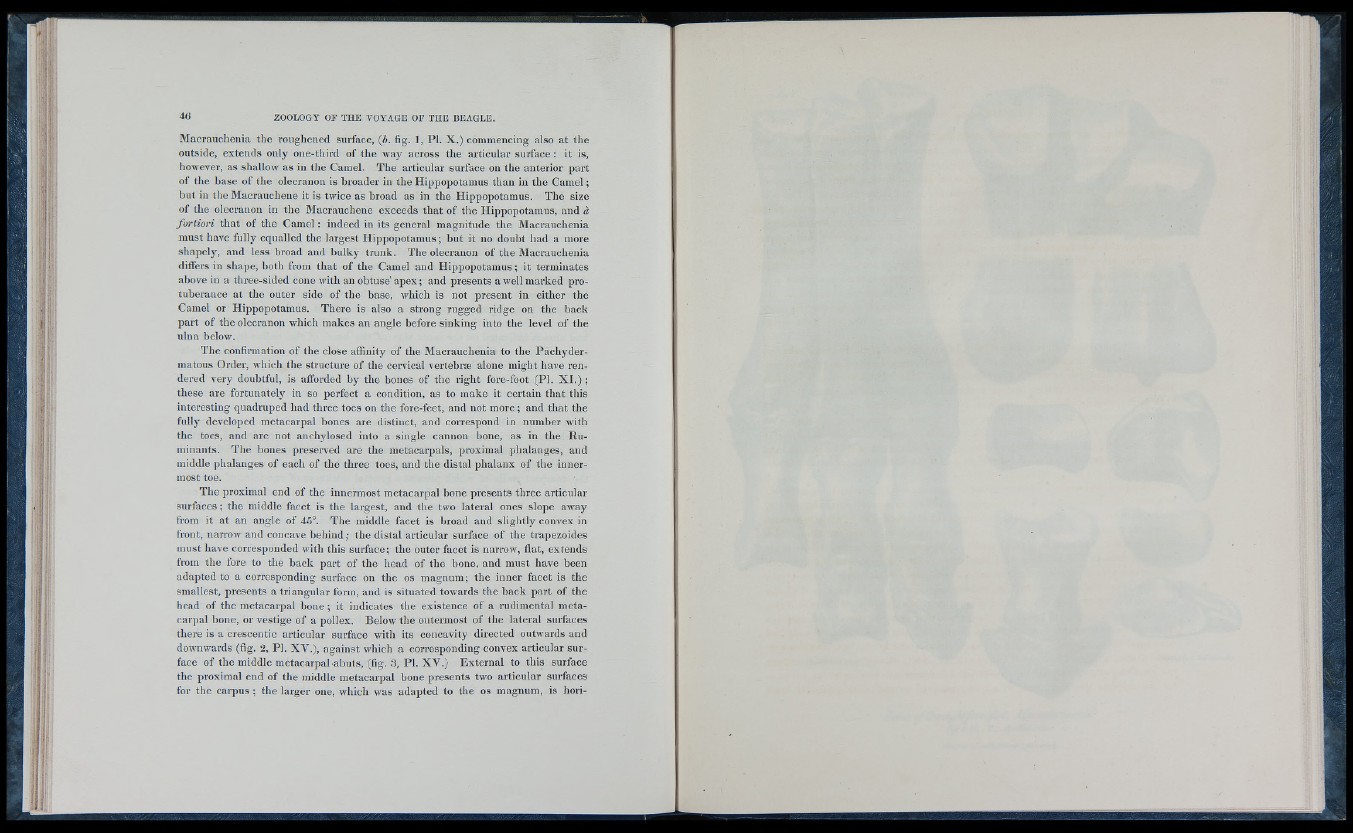
Macrauchenia the roughened surface, (¿. fig. 1, PI. X .) commencing also at the
outside, extends only one-third o f the way across the articular surface : it is,
however, as shallow as in the Camel. Th e articular surface on the anterior part
o f the base o f the olecranon is broader in the Hippopotamus than in the Camel ;
but in the Macrauchene it is twice as broad as in the Hippopotamus. The size
o f the olecranon in the Macrauchene ex c eed s that o f the Hippopotamus, and à
fo r tio r i that o f the Camel : indeed in its general magnitude the Macrauchenia
must have fully equalled the largest Hippopotamus ; but it no doubt had a more
shapely, and le ss broad and bulky trunk. The olecranon o f the Macrauchenia
differs in shape, both from that o f the Camel and Hippopotamus ; it terminates
above in a three-sided cone with an obtuse' apex ; and presents a w ell marked protuberance
at the outer side o f the base, which is not present in either the
Camel or Hippopotamus. There is also a strong rugged ridge on the back
part o f the olecranon which makes an angle before sinking into the lev e l o f the
ulna below.
The confirmation o f the close affinity o f the Macrauchenia to the P a chyd ermatous
Order, which the structure o f the cervical vertebræ alone might have rendered
very doubtful, is afforded b y the bones o f the right fore-foot (PI. X I .) ;
these are fortunately in so perfect a condition, as to make it certain that this
interesting quadruped had three toes on the fore-feet, and not more ; and that the
fully developed metacarpal bones are distinct, and correspond in number with
the toes, and are not anchylosed into a sing le cannon bone, as in the Ru minants.
The bones preserved are the metacarpals, proximal phalanges, and
middle phalanges o f each o f the three toes, and the distal phalanx o f the innermost
toe.
The proximal end o f the innermost metacarpal bone presents three articular
surfaces ; the middle facet is the largest, and the two lateral ones slope away
from it at an angle o f 45°. The middle facet is broad and sligh tly convex in
front, narrow and concave behind; the distal articular surface o f the trapezoides
must have corresponded with this surface; the outer facet is narrow, flat, extends
from the fore to the ba ck part o f the head o f the bone, and must have been
adapted to a corresponding surface on the os magnum; the inner facet is the
smallest, presents a triangular form, and is situated towards the ha ck part o f the
head o f the metacarpal bone ; it indicates the existenc e o f a rudimental metacarpal
hone, or v estig e o f a pollex. Below the outermost o f the lateral surfaces
there is a crescentic articular surface with its concavity directed outwards and
downwards (fig. 2 , PI. X V .), against which a corresponding convex articular surface
o f the middle metacarpal abuts, (fig. 3, PI. X V .) External to this surface
the proximal end o f the middle metacarpal hone presents two articular surfaces
for the carpus ; the larger one, which was adapted to the os magnum, is hori